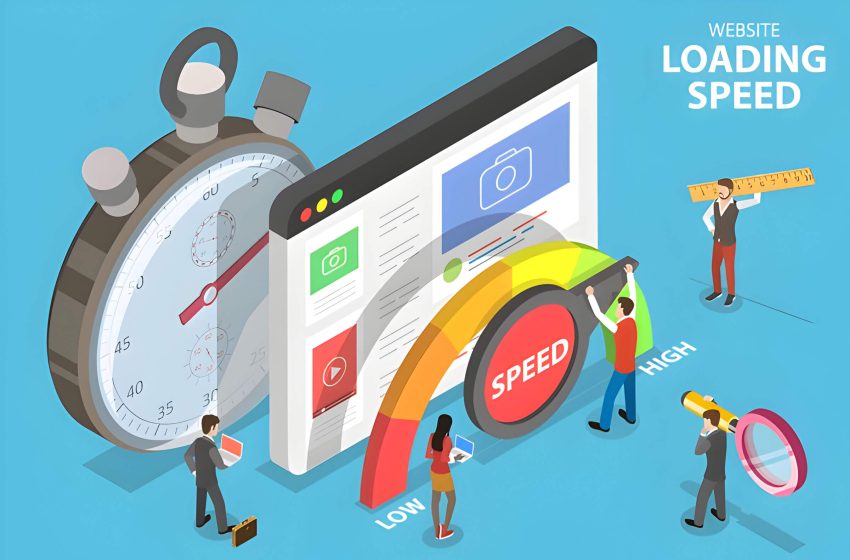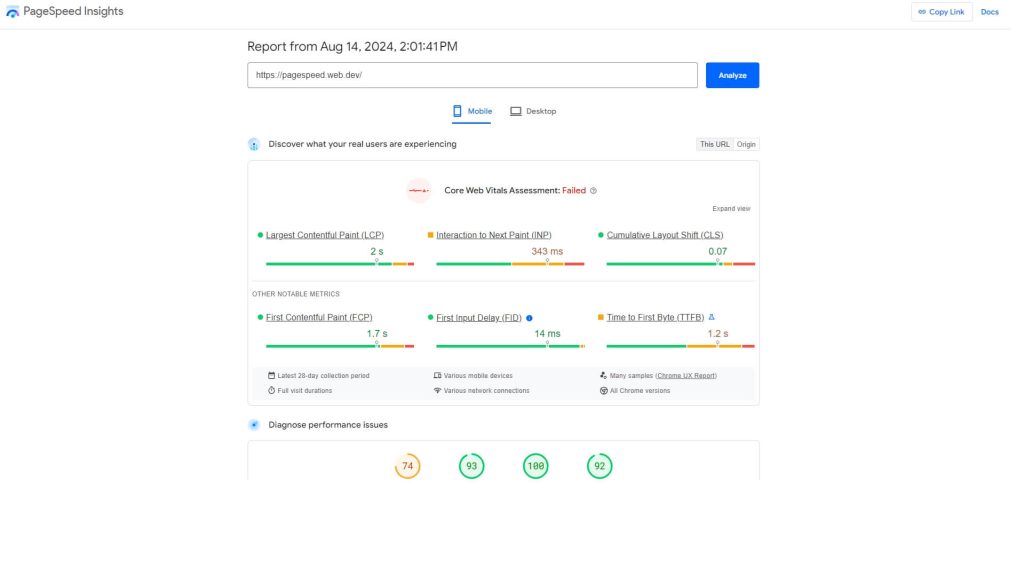The Importance of Website Loading Speed for SEO

Website loading speed is crucial for user experience and SEO in today’s digital landscape. As search engines prioritize user-centric metrics, fast-loading websites have become essential. This article examines how loading speed affects SEO, explores factors impacting site performance, and provides optimization best practices. Improving your website’s speed can enhance user engagement, reduce bounce rates, and boost search rankings.
Understanding Website Loading Speed and Its Impact on SEO
Website loading speed is a critical factor in both user experience and search engine optimization (SEO). Page load time refers to the duration it takes for a web page to fully display its content to a visitor. This metric has become increasingly important as search engines, particularly Google, consider site speed as one of their ranking factors.
Fast-loading websites not only improve user experience but also contribute positively to SEO efforts. When pages load quickly, visitors are more likely to stay on the site, reducing bounce rates and increasing engagement. Search engines interpret these positive user signals as indicators of quality content, potentially boosting the site’s rankings.
Conversely, slow-loading pages can negatively impact a website’s performance in search results. Users tend to abandon sites that take too long to load, leading to higher bounce rates and decreased time on site. Search engines may interpret these metrics as signs of poor user experience, potentially resulting in lower rankings.
To optimize website loading speed, webmasters can implement various techniques such as compressing images, minifying CSS and JavaScript, leveraging browser caching, and using content delivery networks (CDNs). Regular monitoring and optimization of site speed are essential practices for maintaining a competitive edge in search engine rankings and ensuring a positive user experience.
How Website Loading Speed Affects User Behavior and Engagement
Website loading speed plays a crucial role in shaping user behavior and engagement. Studies have consistently shown that the importance of website loading speed for SEO cannot be overstated. A slow-loading site can significantly increase bounce rates, as impatient users are more likely to abandon a page that takes too long to load. Conversely, faster loading times tend to improve time on site metrics, as users can quickly access and navigate through content.
The impact of loading speed extends beyond user experience to directly affect conversion rates. E-commerce sites, in particular, have reported substantial increases in sales when reducing load times by even fractions of a second. This correlation underscores the direct link between site performance and business outcomes.
User satisfaction is heavily influenced by how quickly a website responds. In today’s fast-paced digital world, users expect instant access to information, and delays can lead to frustration and negative perceptions of a brand. This is especially true for mobile users, where mobile responsiveness and quick loading times are paramount. With the majority of web traffic now coming from mobile devices, optimizing for speed on smartphones and tablets is no longer optional but essential for maintaining a competitive edge in the digital landscape.
Google’s Emphasis on Page Speed
Google’s emphasis on page speed has become increasingly significant for SEO, with the introduction of Core Web Vitals and Page Experience signals. These metrics are designed to measure and improve user experience on websites, directly impacting search rankings.
Core Web Vitals consist of three key measurements:
- Largest Contentful Paint (LCP): This metric evaluates loading performance, measuring how quickly the largest content element becomes visible.
- First Input Delay (FID): FID assesses interactivity by measuring the time between a user’s first interaction and the browser’s response.
- Cumulative Layout Shift (CLS): This metric quantifies visual stability by measuring unexpected layout shifts during page loading.
These Core Web Vitals, combined with existing Page Experience signals like mobile-friendliness, safe browsing, HTTPS security, and intrusive interstitial guidelines, form a comprehensive set of factors that Google uses to evaluate overall page experience.
The importance of website loading speed for SEO cannot be overstated. Faster-loading pages not only improve user experience but also contribute to better crawling and indexing efficiency. Sites that meet Google’s Core Web Vitals thresholds are more likely to rank higher in search results, potentially gaining a competitive edge in their respective niches.
To optimize for these metrics, website owners should focus on streamlining code, optimizing images, leveraging browser caching, and minimizing server response times. Regular monitoring and improvement of Core Web Vitals can lead to enhanced user satisfaction and improved search engine visibility.
Key Factors Influencing Website Loading Speed
Website loading speed is a critical factor in both user experience and search engine optimization (SEO). Several key elements contribute to a site’s performance:
Server response time plays a crucial role in determining how quickly a website loads. A fast, efficient server can significantly reduce the time it takes for a user to see the first byte of content.
Image optimization is essential for improving loading speed. Compressing images and using appropriate file formats can drastically reduce file sizes without compromising quality, leading to faster load times.
Code minification involves removing unnecessary characters from HTML, CSS, and JavaScript files without changing their functionality. This process reduces file sizes, allowing browsers to load and parse the code more quickly.
Browser caching stores static files on a user’s device, eliminating the need to reload these elements on subsequent visits. This technique can significantly improve loading times for returning visitors.
Implementing a content delivery network (CDN) can enhance website speed by distributing content across multiple servers worldwide. This approach reduces the physical distance between users and server locations, resulting in faster content delivery.
By addressing these factors, website owners can improve their site’s loading speed, enhancing both user experience and SEO performance.
Tools to Measure and Analyze Your Website’s Loading Speed

Website loading speed is a critical factor in both user experience and search engine optimization (SEO). To ensure your site performs optimally, several tools are available to measure and analyze its speed. Google PageSpeed Insights is a popular choice, offering detailed performance reports for both mobile and desktop versions of your site. It provides suggestions for improvements and a performance score out of 100.
GTmetrix is another comprehensive tool that combines data from Google Lighthouse and Yahoo’s YSlow, offering actionable recommendations to boost your site’s speed. Pingdom, known for its user-friendly interface, provides a waterfall analysis of your site’s loading process, helping you identify specific elements causing delays.
For more advanced users, WebPageTest offers in-depth performance testing from multiple locations and browsers. It’s particularly useful for simulating various network conditions. Lastly, Chrome DevTools, built into the Google Chrome browser, provides developers with real-time insights into page loading, helping to identify bottlenecks and optimize performance.
By regularly using these tools, you can monitor your website’s loading speed, identify areas for improvement, and ultimately enhance your site’s SEO performance and user experience.
Best Practices to Improve Your Website’s Loading Speed
Website loading speed is a critical factor in both user experience and search engine optimization (SEO). A fast-loading website not only keeps visitors engaged but also improves your search engine rankings. To enhance your site’s performance, consider implementing these best practices:
- Optimize images: Compress and resize images without compromising quality. Use appropriate file formats and consider lazy loading for images below the fold.
- Minimize HTTP requests: Reduce the number of elements that need to load by combining files, using CSS sprites, and removing unnecessary scripts or plugins.
- Enable compression: Utilize GZIP compression to reduce the size of your HTML, CSS, and JavaScript files, significantly decreasing load times.
- Leverage browser caching: Set expiration dates for static resources, allowing returning visitors to load your site more quickly from their local cache.
- Reduce server response time: Optimize your server configuration, use a content delivery network (CDN), and choose a reliable hosting provider to minimize the time it takes for your server to respond to requests.
By implementing these strategies, you can significantly improve your website’s loading speed, leading to better user experience, increased engagement, and improved search engine rankings.
The Impact of Website Loading Speed on Mobile SEO
Website loading speed has become a critical factor in mobile SEO, especially since Google’s shift to mobile-first indexing. With more users accessing the internet via mobile devices, the importance of website loading speed for SEO cannot be overstated. A slow-loading site can negatively impact user experience, leading to higher bounce rates and lower search engine rankings.
To address this, webmasters are increasingly turning to technologies like Accelerated Mobile Pages (AMP) to enhance loading times. Additionally, responsive design plays a crucial role in mobile optimization, ensuring that websites adapt seamlessly to various screen sizes and devices.
Mobile user experience is directly influenced by loading speed, with studies showing that users are likely to abandon sites that take more than a few seconds to load. This behavior signals to search engines that the site may not be providing value, potentially affecting its rankings.
To improve mobile SEO, focus on optimizing images, minifying code, leveraging browser caching, and reducing server response times. Regular testing and optimization of your site’s mobile performance can lead to improved search visibility and user satisfaction in the increasingly mobile-centric digital landscape.
Case Studies (How Improved Loading Speed Boosted SEO Performance)
Case studies provide compelling evidence of the importance of website loading speed for SEO performance. Several real-world examples demonstrate how businesses have significantly improved their search engine rankings and overall online presence by optimizing their site speed.
One notable success story involves an e-commerce platform that reduced its average page load time from 6 seconds to 2 seconds. This improvement resulted in a 35% increase in organic traffic within three months and a 20% boost in conversion rates. The faster loading speed not only enhanced user experience but also led to higher search engine rankings for key product pages.
Another example comes from a news website that implemented advanced caching techniques and image optimization. These changes cut their load time in half, leading to a 45% increase in mobile traffic and a 15% rise in ad revenue. The improved speed also contributed to better crawling and indexing by search engines, resulting in more frequent content updates in search results.
A B2B software company saw remarkable improvements after focusing on server response time and minimizing HTTP requests. Their efforts led to a 28% increase in organic visibility and a 40% reduction in bounce rates. Additionally, they climbed from page three to page one for several competitive keywords, showcasing the direct impact of speed optimization on search rankings.
These case studies underscore the critical role of website loading speed in SEO performance. By prioritizing speed optimization, businesses can achieve significant improvements in traffic, rankings, and ultimately, their bottom line.
Prioritize Website Loading Speed for Better SEO and User Satisfaction
Website loading speed is a critical factor that can significantly impact both your search engine rankings and user experience. As we’ve discussed throughout this article, a fast-loading website not only pleases visitors but also sends positive signals to search engines, potentially boosting your SEO efforts.
By implementing the strategies we’ve outlined, such as optimizing images, leveraging browser caching, and minimizing HTTP requests, you can dramatically improve your site’s performance. Remember that even small improvements in loading times can lead to substantial gains in user engagement and conversion rates.
It’s important to regularly monitor and test your website’s speed using tools like Google PageSpeed Insights or GTmetrix. This will help you identify areas for improvement and track your progress over time.
Prioritizing website loading speed is an investment in your online presence that will pay dividends in terms of increased traffic, improved user satisfaction, and better search engine rankings. Don’t overlook this crucial aspect of web development – make speed optimization a cornerstone of your digital strategy today.